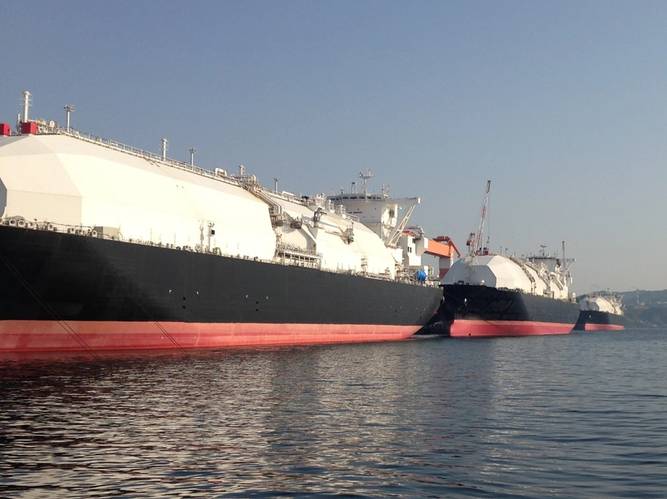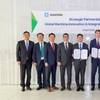New Standard for LNG Cargo Containment Systems
Wilhelmsen Technical Solutions (WTS) said it has successfully completing the gas trial for the first LNG carrier built to a Boil Off Rate (BOR) of 0.08% per day.
WTS subsidiary company Ti Group completed the test on the LNG carrier Seishu Maru, currently under construction at Mitsubishi Heavy Industries in Japan for NYK Line.
Ti Group was responsible for supplying the cargo tank insulation system on Seishu Maru, one of six LNG carriers to be delivered in this order. The vessel is a next generation Sayaendo design vessel, with a cargo capacity of 150,000 cubic meters. This unique design features four spherical Moss tanks protected by a continuous cover integrated with the ship’s hull.
The ship passed its gas trial and was delivered to the owner in late September 2014. Ti Group Managing Director Anstein Sorensen says the ship’s insulation system received no specific comments during the trial, indicating a very satisfactory performance.
“The gas trial is one of the critical tests to pass before the ship can be handed over to owner because it proves that the vessel’s containment system, including the insulation, is working correctly,” said Sorensen. “Passing the test at a BOR of just 0.08% is a milestone for the project and sets a standard that reflects our knowledge and expertise in this area.”
Ti Group provides two options for cargo tank insulation based on very different technologies. The panel system is an adaptable solution for LNG/LEG/LPG cargo tanks, with a design that can be fitted to most tank geometries. The company also offers a highly efficient and economical insulation system for LPG carriers, based on spray foam technology.
This focus on innovation, together with the development of new materials and methods of application for more than 30 years, has helped Ti Group adapt to meet the demands of the rapidly changing design and construction of LNG and LPG Carriers.
















